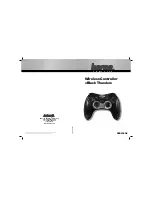
CHAPTER 8: APPLICATION OF SETTINGS
PROTECTION SIGNALING SCHEMES
L90 LINE CURRENT DIFFERENTIAL SYSTEM – INSTRUCTION MANUAL
8-17
8
8.5.2 Direct under-reaching transfer trip (DUTT)
This scheme uses an under-reaching Zone 1 distance element to key a transfer trip signal to the remote end(s), where on
receipt, the DUTT pilot scheme operates without any additional supervision.
For proper operation of the scheme the Zone 1 phase and ground distance elements must be enabled and configured per
rules of distance relaying.
The scheme generates an output operand (DUTT TX) that is used to transmit the signal to the remote end. Choices of
communications channel include Remote Inputs/Outputs and telecommunications interfaces. When used with
telecommunications facilities, assign the output operand to operate an output contact connected to key the transmitter at
the interface.
Note that the same protection signaling can be used by a breaker failure scheme, in which case the signal can be sealed in
by breaker fail for a time longer than the auto-reclose “reclaim” time which then prevents auto-reclose when not required.
A provision for an optional seal-in of the send signal is made to cover those situations where Power Line Carrier (PLC)
signaling is used and the signal must be transmitted in a potentially noisy situation due to the fault.
The scheme output operand (DUTT OP) must be configured to interface with other relay functions, output contacts in
particular, in order to make the scheme fully operational. Typically, the output operand is programmed to initiate a trip,
breaker fail, and auto-reclose, and to drive a user-programmable LED as per user application.
8.5.3 Permissive under-reaching transfer trip (PUTT)
This scheme uses an under-reaching Zone 1 distance element to key a transfer trip signal to the remote end where it is
supervised by the over-reaching Zone 2 distance elements.
For proper operation of the scheme the Zone 1 and 2 phase and ground distance elements must be enabled and
configured per rules of distance relaying.
The scheme generates an output operand (PUTT TX) that is used to transmit the signal to the remote end. Choices of
communications channel include Remote Inputs/Outputs and telecommunications interfaces. When used with
telecommunications facilities the output operand should be assigned to operate an output contact connected to key the
transmitter at the interface.
The PUTT RX PICKUP DELAY timer can be used to ride through spurious PLC receive signals.
The scheme output operand (PUTT OP) must be configured to interface with other relay functions, output contacts in
particular, in order to make the scheme fully operational. Typically, the output operand is programmed to initiate a trip,
breaker fail, and auto-reclose, and to drive a user-programmable LED as per user application.
8.5.4 Permissive over-reaching transfer trip (POTT)
This scheme is intended for two-terminal line applications.
This scheme uses an over-reaching Zone 2 distance element to essentially compare the direction to a fault at both the
ends of the line.
Ground directional overcurrent functions available in the relay can be used in conjunction with the Zone 2 distance
element to key the scheme and initiate its operation. This provides increased coverage for high-resistance faults.
Good directional integrity is the key requirement for an over-reaching forward-looking protection element used to
supplement Zone 2. Even though any FlexLogic operand can be used for this purpose, allowing the user to combine
responses of various protection elements or to apply extra conditions through FlexLogic equations, this extra signal is
primarily meant to be the output operand from either the Negative-Sequence Directional IOC or Neutral Directional IOC.
Both of these elements have separate forward (FWD) and reverse (REV) output operands. Use the forward indication NEG
SEQ DIR OC1 FWD or NEUTRAL DIR OC1 FWD).
An important consideration is when one of the line terminals is open. It is then necessary to identify this condition and
arrange for a continuous sending of the permissive signal or use a slower but more secure echo feature to send a signal to
the other terminal, which is producing the fault infeed. With any echo scheme however, a means must be provided to avoid
















































